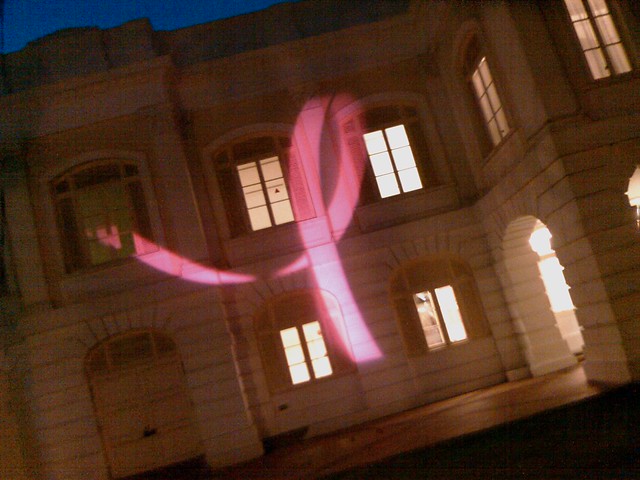Pharmaceutical Drug Crime Rising, But At A Slower Place
Since completion of its annual review of the incidence of pharmaceutical crime including the counterfeiting, illegal diversion and theft of medicines, the Pharmaceutical Security Institute has been engaged in briefings of drug regulators around the world.

Counterfeiters targeted cancer drugs in 2010
Reebok Pink Ribbon Walk 2008,
by imeleven via Flickr.
Since completion of its annual review of the incidence of pharmaceutical crime including the counterfeiting, illegal diversion and theft of medicines, the Pharmaceutical Security Institute has been engaged in briefings of drug regulators around the world. Beginning on April 26, at Seoul, Korea where regulatory participants from twenty-five countries gathered, and continuing through last week, at London, England where the Permanent Forum against International Pharmaceutical Crime met, the results of the Institutes’ findings were shared.
The data collected by PSI provides matrices which regulators can use to better understand the criminal nature and extent of activity of these dangerous well-organized groups of counterfeiters, diverters and thieves which operate on an international basis. While remaining a significant challenge to the health and safety of patients, there was some encouraging news in the Institutes’ findings.
Overall, pharmaceutical crime incidents increased to 2,054, the largest number recorded. However, between 2009 and 2010, for the first time in nine years, the rate of increase has slowed. In fact, the rate of increase was slightly less than 2.5%. Commenting on this development, and calling for continued vigilance, Tom Kubic, President and CEO of the Institute, noted that “many individual criminals and criminal organizations have become active in the counterfeiting, illegal diversion and theft of pharmaceuticals during 2010, a fact also acknowledged by the U.N. Office on Drugs and Crime which characterized the trafficking of medicines as an ‘opportunistic and extremely callous crime’ which ‘deprives the poorest of life saving medicines.’”
Mr. Kubic added that “consumers must carefully vet all types of medication since all therapeutic categories and all formulations have been targeted by counterfeiters.” However the most frequent counterfeit medicines found were genito-urinary, anti-infective, and central nervous system medication.
The therapeutic category experiencing the greatest area of counterfeit incident growth has been in metabolism. The increase is believed to have resulted from the increased detection of counterfeit anti-diabetic agents in China in 2010. The second fastest growing area included cytostatics, which are medications used in cancer treatment because they inhibit cell growth and division.
The majority of incidents occurred in Asia, with Latin America, Europe, Eurasia and North America coming in order behind. Asian incidents totaled 1,073, while incidents in Latin America, Europe, Eurasia and North America averaged 283 per area, roughly ¼ of those in Asia.
While Asia overwhelming leads in incidents, arrests in Asia are only 38% of total arrests, followed very closely by Latin American arrests, 33%. Europe, the third greatest area of incidents, represents only 6% of arrests made globally, and Eurasia represents only 1%. North America prosecutes a greater proportion of incidents, 9% of the total amount globally, though it is fifth on the list of incidents.
Mr. Kubic reported that from the Institute’s review and analysis, the following three noteworthy trends arose during 2010:
- Internationally, police and customs agencies led global efforts and increased their effectiveness by engaging globally to address counterfeit and illegal medicines;
- Complementing enforcement efforts, new technologies were introduced in a number of countries in Africa to combat counterfeit medicines; and,
- In recognizing the need to address counterfeiting, at least thirteen countries, including Brazil, Mexico and Pakistan, either passed new laws aimed at strengthening the supply chain or have increased penalties for anyone convicted of counterfeiting medicines.